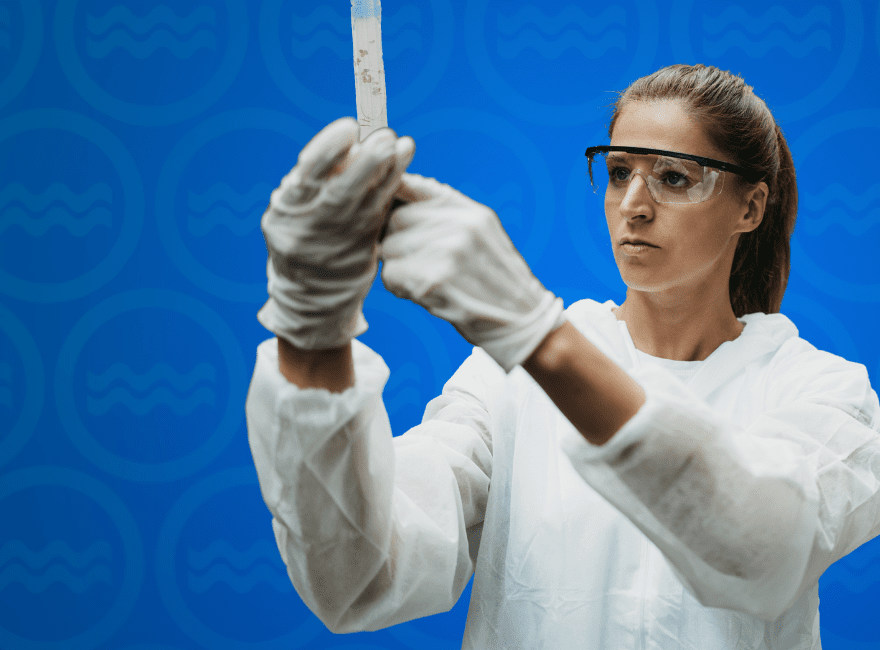
7 Ways to Quality Control Environmental Data
The demand for accurate and reliable environmental data is growing steadily. As a result, hydrological organizations have to ensure that their data meets the highest quality standards. So how do you improve how you quality control your environmental data?
The Water Survey of Canada is responsible for publishing continuous water data from 2,500 gauging stations. They've developed a systematic approach to maintaining environmental data quality.
In this blog post, we will summarize our most popular webinar to date. We will discuss seven ways to automatically automate environmental data quality control (QA/QC) for real-time water data monitoring, which can help other hydrologists elevate the accuracy and reliability of their data.
“[The data] confirms the rapid adoption of monitoring technologies generate huge volumes of data. For example, digital multichannel data loggers are used today by 71% of [survey] respondents, and solid-state electronic sensors are used by 67% of respondents. Real time data transmission with more continuous data being collected.”, said Derek Forsbloom from Water Survey Canada
1. Automate QA/QC for Real-Time Data
Gone are the days when QA/QC was a manual, time-consuming process. Automated QA/QC can significantly increase efficiency, allowing you to swiftly scrutinize and act upon potential issues. Many modern software solutions can automatically apply data validation rules, highlight anomalies, generate data summaries and produce reports, all in real-time.
2. Set Up Real-Time Station Health Alerts
Regular monitoring of the health of your gauging stations is essential for maintaining data quality. By setting up real-time station alerts, you can quickly identify and address any issues relating to sensor errors or damaged equipment. Automated notifications can allow swift corrective action, ensuring minimal impact on data quality and integrity.
3. Utilize Notifications and Auto-Corrections
In addition to gauging station alerts, it's crucial to have a system in place to notify hydrologists when issues arise with the quality of the data being collected. Notifications can be configured to alert personnel when certain events, such as exceeding predefined thresholds, occur. Auto-correction features can be implemented to automatically. You can apply pre-determined corrections to raw data, increasing efficiency and ensuring consistent data quality.
4. Avoid Warnings for Invalid Events
To avoid the unnecessary workload caused by invalid warnings, it is essential to set specific conditions for each parameter being monitored.
You can create a more targeted approach to event detection and prevention by doing the following:
- Defining valid ranges
- Establishing tolerances
- Setting minimum and maximum limits for your data
For an in-depth look at avoiding errors and anomalies such as invalid event warnings, check out this review on "Validity & Errors in Water Quality Data."
Continue Learning


5. Produce Discharge Under Shifting Conditions
The natural variations in river conditions can significantly influence the accuracy of discharge measurements. By using advanced techniques (like moving averages based on previous records) and tools (like the Aquarius tool that Water Survey of Canada uses), you can effectively adapt to these shifting conditions to maintain high-quality and accurate discharge values. For more information in best practices for producing accurate discharge measurements under shifting conditions, check out our whitepaper.
6. Utilize Aquarius to Meet Rising Quality Control Demands
Aquarius is a powerful water data management solution designed for hydrologists. With seamless integration, automation, and customization capabilities, the hydrology software can elevate the quality of environmental data management. By using Aquarius to streamline your Quality Control process, your organization can become more efficient. Unlock the ability to proactively meet the growing demands for accurate environmental data.
7. Foster a Culture of Continuous Improvement
Ensuring data quality is not a one-time task but a continuous effort. One thing a lot of organizations struggle with is standardizing their QA/QC process. But with the right tools in place, software automates that process and creates a better experience for your staff. Establishing a culture of continuous improvement within your organization will keep all staff engaged in maintaining and enhancing the quality of data they produce. Regular training, reviews, and updates will not only help maintain environmental data integrity but also empower your team to stay informed and adapt to new technologies and methods.
Next Steps to Quality Control Your Environmental Data
In the webinar, Forsbloom concludes, “Water resource managers are also turning to real time communications technologies for transmission. [Hydrologists] expect satellite communications to grow from 16% of stations in 2002 to 40% of stations by 2022. Web enabled sensors are expected to grow from being used in 4% of stations in 2002 to 40% in 2022. So huge growth and in non-production cycles today. Consumers of hydrological data want immediate access to continuous information that is quality controlled.”
The quality of your hydrometric data is paramount to providing accurate, reliable, and actionable insights for water resource management. By adopting the techniques and methods discussed in this blog post, you can significantly elevate the quality and reliability of your real-time environmental data. Automated QA/QC processes, real-time alerts, targeted notifications, and a culture of continuous improvement will empower you to meet the growing demands of the hydrological community and make informed decisions for effective water management.
Find Your Partner in Change Management
As utilities progress on their digital transformation journey, one of the main challenges they face is resistance to change.
Technology partners can help organizations guide their change management strategies to ensure the success of any new technology projects. While every water organization is unique, many of the challenges are similar: legacy systems, data silos, lack of resources, etc.
Experienced technology partners like Aquatic Informatics have seen it all before. We can help you achieve streamlined quality control for your environmental data. From source water through to the receiving environment, our interconnected data management platforms can help you drive the efficient management of water information across the water cycle with minimal disruption to your operations.
Get in touch to discuss your water data projects, check out our upcoming product demo, or schedule a personalized demo of our platforms.

